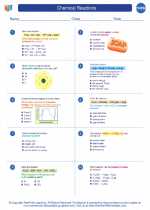Muscle Tissue
Muscle tissue is a specialized type of tissue that enables movement in the body. There are three main types of muscle tissue: skeletal, cardiac, and smooth. Each type has unique characteristics and functions.
Skeletal Muscle Tissue
Skeletal muscle tissue is attached to the bones and is responsible for voluntary movements such as walking, running, and lifting weights. It is striated, meaning it has a striped appearance under a microscope due to the arrangement of its protein filaments. Skeletal muscle tissue is under conscious control and is composed of long, cylindrical cells called muscle fibers.
Cardiac Muscle Tissue
Cardiac muscle tissue is found only in the heart. It is also striated like skeletal muscle tissue but is involuntary, meaning it contracts without conscious control. Cardiac muscle tissue has intercalated discs, which are specialized cell junctions that allow for rapid transmission of electrical signals, enabling the heart to beat in a coordinated manner.
Smooth Muscle Tissue
Smooth muscle tissue is found in the walls of hollow organs such as the stomach, intestines, and blood vessels. It is non-striated and involuntary. Smooth muscle tissue contracts slowly and rhythmically, helping to propel substances through the organs and regulate blood flow in the body.
Study Guide for Muscle Tissue
- What are the three main types of muscle tissue?
- Describe the characteristics of skeletal muscle tissue.
- Where is cardiac muscle tissue found, and what are its unique features?
- What are the functions of smooth muscle tissue?
- Explain the differences in voluntary and involuntary control among the three types of muscle tissue.
- How are muscle fibers organized within skeletal muscle tissue?
[Muscle Tissue] Related Worksheets and Study Guides:
.◂Chemistry Worksheets and Study Guides High School. Chemical Reactions

 Worksheet/Answer key
Worksheet/Answer key
 Worksheet/Answer key
Worksheet/Answer key
 Worksheet/Answer key
Worksheet/Answer key
 Worksheet/Answer key
Worksheet/Answer key
 Worksheet/Answer key
Worksheet/Answer key
 Vocabulary/Answer key
Vocabulary/Answer key
 Vocabulary/Answer key
Vocabulary/Answer key
 Vocabulary/Answer key
Vocabulary/Answer key
